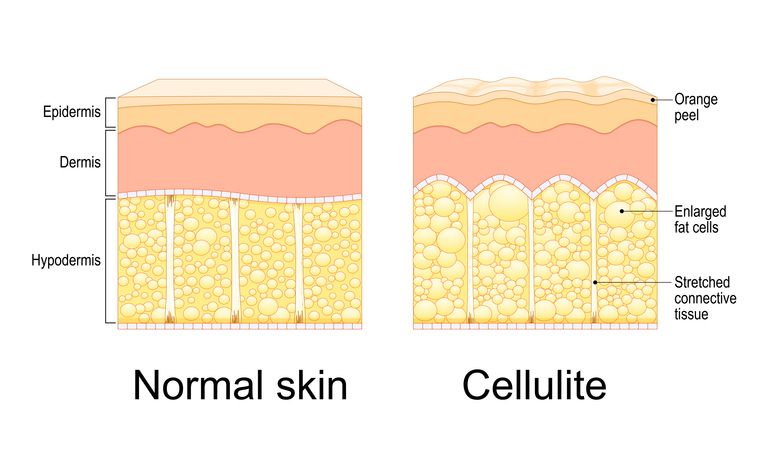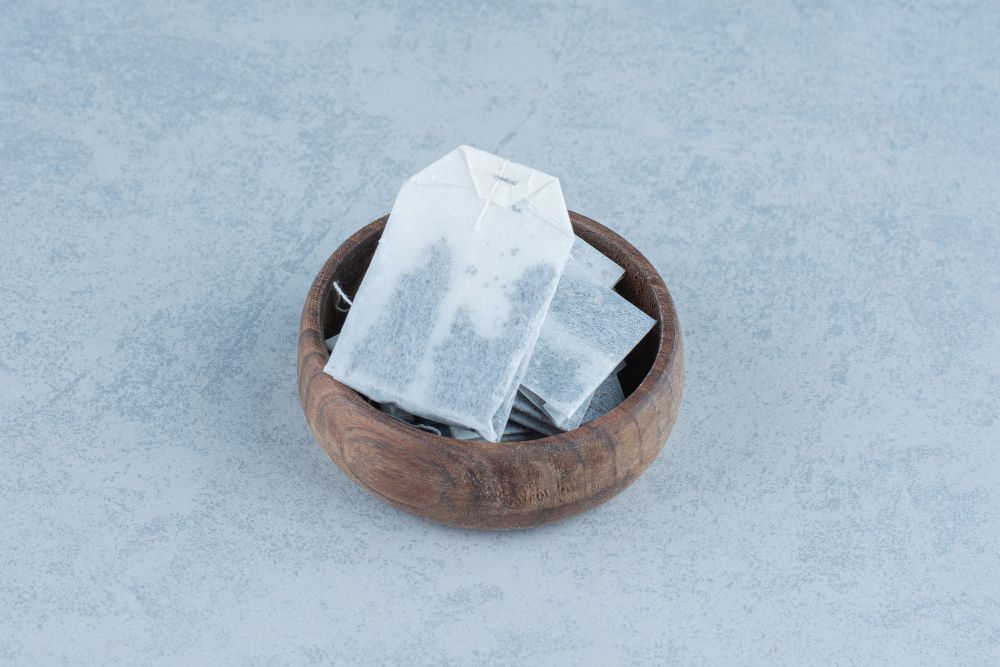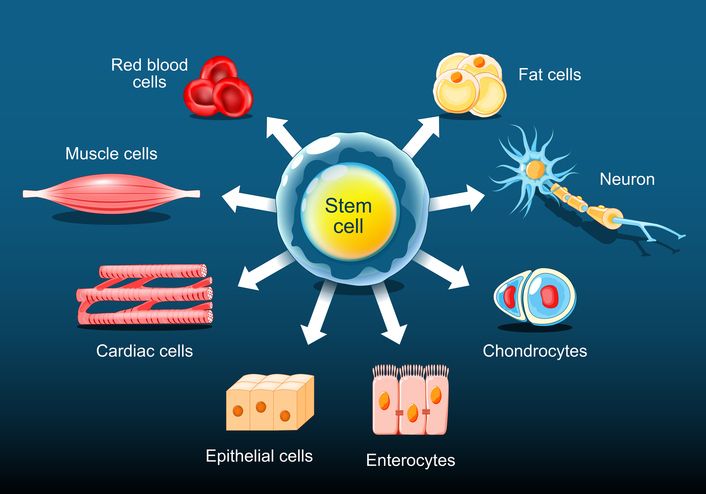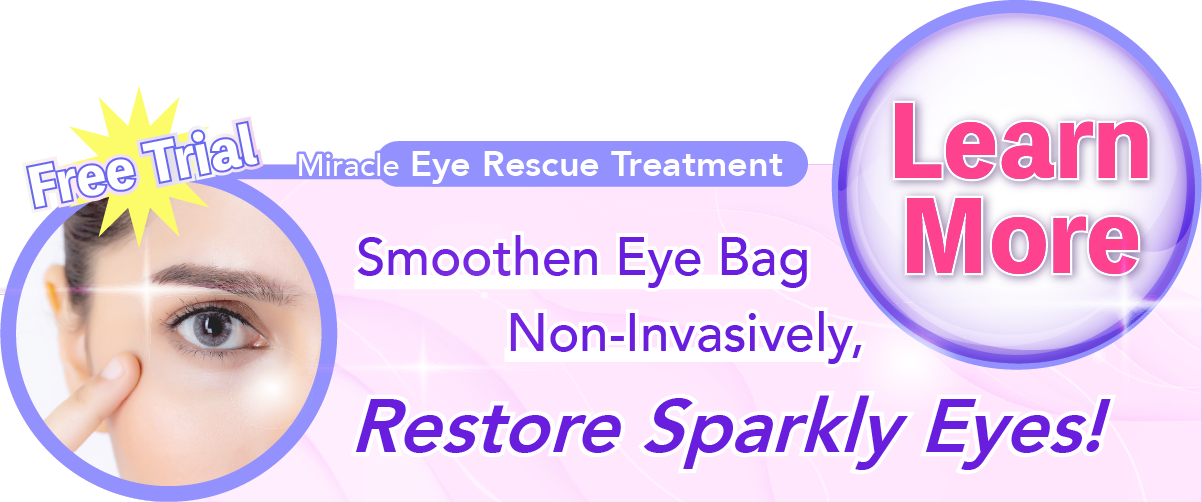
Author: Natalie Ng|Updated: 16 June 2025
If your eyes look more tired lately—puffier, darker, or just a little swollen—it could be linked to what you're eating. Certain foods play a big role in how your skin looks and feels, especially around the delicate under eye area. Leafy greens like spinach or kale are a solid start. They’re packed with vitamins that support skin health and improve circulation, which helps with under eye bags and dark circles. Berries are another good option, which are full of antioxidants that protect blood vessels and help reduce puffiness without needing any complicated fixes. On the other hand, too much salt can make things worse by causing water retention that shows up under your eyes. This is why staying hydrated is more important than you think, letting your body clear out extra fluid and keeping your skin looking balanced. If you’re looking for simple ways to support your eye health, the right foods can make a visible difference. Keep reading to find out which ones are worth adding to your routine.

Diet and Its Impact on Eye Puffiness
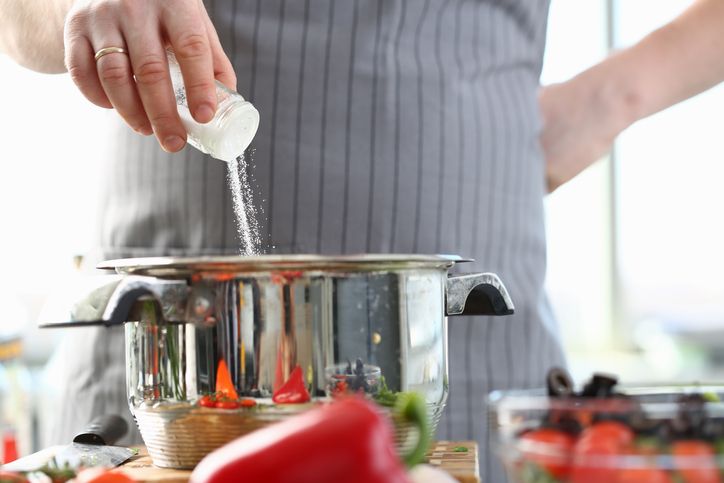
Salty Foods Can Increase Fluid Retention
Puffy eyes and under eye bags often come from how your body holds onto fluid. What you eat—and what you skip—can change how much water builds up in the under eye area.
Eating too many salty foods can cause fluid to collect around the eyes. This is because high sodium levels affect how your body controls water, especially in the delicate skin under the eyes. That’s why certain habits can make a noticeable difference:
• Regular intake of salty snacks, processed foods, or sauces raises sodium levels
• High sodium leads to more water retention, especially around the eyes
• Retained fluid makes puffiness and swelling more visible
These changes may not show right away, but over time, they add up and affect the appearance of the lower eyelids.
Not Drinking Enough Water Affects Skin and Swelling
Dehydration is another common cause. Without enough water, your body holds on to what it has, leading to swelling in areas like the lower eyelids.
• Low hydration makes it harder for your body to flush out excess salt
• Lack of water weakens blood flow and skin cell turnover
• Drinking 2 to 3 liters daily helps regulate fluid levels and supports skin
Staying hydrated improves circulation and helps reduce puffiness while keeping the skin firm and balanced.
The Undereye Area Is More Sensitive to Swelling
The skin around the eyes is thin and holds less fat, so any fluid buildup shows more easily. This makes the area more prone to swelling from even small shifts in diet or hydration.
Even if the rest of your face doesn’t look bloated, your eyes might still show signs of water retention. The lower eyelids are especially sensitive, and once swelling starts, it can take time to go down—especially without changes to your daily habits.
If you’re noticing more puffiness or under eye circles than usual, small shifts in what you eat and drink may help reduce swelling and improve your skin tone over time.

Dark Leafy Greens for Reducing Eye Puffiness
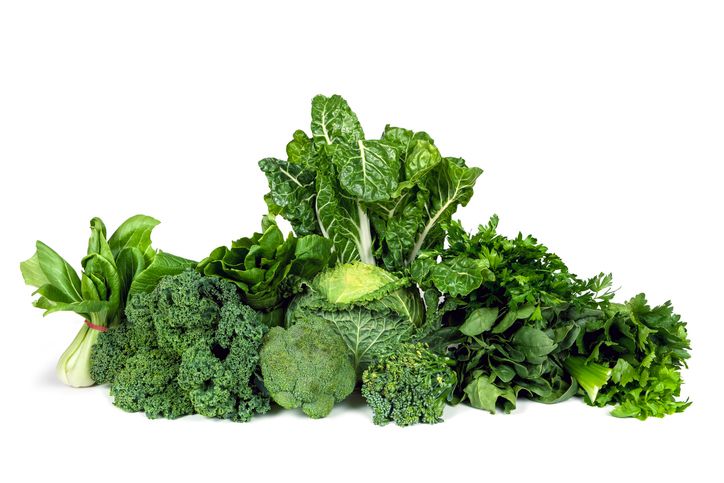
Benefits of Dark Greens for Under Eye Bags
Dark leafy greens play a strong role in reducing puffiness and improving the appearance of under eye bags. They contain high levels of vitamin K, vitamin C, and vitamin E—nutrients that support healthy blood vessels and help reduce swelling in the under eye area. Dark leafy greens also provide amino acids, which are essential for collagen production and skin repair.
Vegetables like kale, spinach, and Swiss chard support collagen production and improve circulation, both of which are important for reducing fluid retention and strengthening delicate tissues. These nutrients also offer anti inflammatory properties that calm the skin and protect against damage.
For visible results, aim for about 2 cups daily. You can sauté them lightly, blend them into smoothies, or use them in soups and salads. Regular intake of these greens supports your body’s ability to repair and protect skin cells around the lower eyelids.
How to Boost Nutrient Absorption From Leafy Greens
The way you prepare and pair your greens matters. Leafy vegetables are rich in fat-soluble vitamins, and your body absorbs them better when they’re eaten with the right foods.
Here are simple food combinations that can improve how your body uses the nutrients in dark greens:
• Olive oil: Helps absorb vitamins K and E, improving blood flow and tissue repair
• Citrus fruits: Boost iron absorption, which supports red blood cells and reduces pale skin under the eyes
• Black pepper: Increases antioxidant absorption, helping reduce under eye circles and inflammation
Even a small amount of olive oil or lemon juice can improve nutrient uptake. Try massaging kale with olive oil, topping your spinach with fresh lemon, or adding a pinch of black pepper to your greens for better absorption. These combinations help your body get the most out of every bite.
Read More
Book Now to Experience
Miracle Eye Rescue Treatment
1 Minute Self-Registration
Date should not be before minimal date

Hydrating Foods That Help Reduce Eye Puffiness
Importance of Water-Rich Foods for Puffy Eyes
Eating more water-rich foods can support your body’s fluid balance and reduce swelling in the under eye area. These foods contain a high water content along with vitamins, minerals, and antioxidants that support skin health and help reduce puffiness.
Hydrating foods work by naturally flushing out excess sodium and supporting better blood flow, which can ease swelling around the lower eyelids. These foods also help prevent water retention, a common cause of puffiness, especially when paired with regular water intake.
Food Choices That Support Eye Hydration
Adding these foods into your meals and snacks can help improve the appearance of puffy eyes and under eye bags:
• Cucumber slices – High water content and anti inflammatory properties. Can be eaten or applied directly to closed eyes
• Watermelon cubes – Rich in antioxidants and water. Eat 1–2 cups as a refreshing snack
• Celery sticks – Help reduce water retention and support blood circulation. Munch on 4–5 sticks a day
• Bell peppers – Contain vitamin C and have a high water content. Use ½ cup in salads or cooked dishes
These foods are gentle on the body and work well alongside water to reduce swelling in sensitive skin areas.

Antioxidant-Rich Berries That Help Reduce Under Eye Circles
Nutrients in Berries That Support Eye Health
Berries are a natural source of antioxidants that support blood vessels and reduce puffiness around the eyes. They’re especially rich in anthocyanins—compounds that strengthen the walls of tiny blood vessels under the skin, helping reduce dark circles and swelling in the under eye area.
These antioxidants also protect skin cells from damage caused by inflammation and poor circulation. Regular intake can improve the appearance of sagging skin and support healthy collagen production, which helps the skin under your eyes stay firm and smooth.
Best Berries for Eye Bags and How to Use Them
To see benefits, aim for at least one cup of mixed berries daily. Here are some of the most effective types:
• Blueberries – Highest antioxidant content; support blood flow and reduce early morning puffiness
• Blackberries and raspberries – Help calm inflammation and reduce swelling
• Strawberries – High in vitamin C, which promotes new collagen growth and supports skin tone around the lower eyelids
These berries work best when combined. Try blending them into smoothies, adding them to yogurt bowls, or enjoying them as a simple snack throughout the day.
Book Now to Experience
Miracle Eye Rescue Treatment
1 Minute Self-Registration
Date should not be before minimal date

Key Minerals and Supplements That Reduce Eye Bags
Nutrients That Support the Under Eye Area
To manage under eye bags and puffiness, your body needs a steady supply of minerals and supplements that support skin repair and blood flow. These nutrients help reduce inflammation, support collagen growth, and improve circulation—especially in the delicate skin under the eyes.
These supplements work alongside a balanced diet and hydration to support the health of blood vessels and skin cells, helping reduce dark circles and swelling over time.
Supplements That Help Improve Under Eye Appearance
• Vitamin K – Supports blood vessels and helps reduce dark circles by improving circulation in the under eye area
• Zinc – Fights inflammation and supports tissue healing, which helps manage puffiness and tired-looking eyes
• Omega-3 fatty acids – Reduce skin irritation and help improve skin elasticity by supporting hydration from within
• Vitamin C – Helps build collagen and supports healthy skin tone, reducing the appearance of sagging skin and under eye bags

Foods That Worsen Puffy Eyes and Under Eye Bags
Salty and Processed Foods Can Increase Swelling
Some foods work against your efforts to reduce puffiness. Salt and processed foods are major causes of fluid retention, which often shows up as swelling around the eyes. When sodium levels rise, your body holds onto water, making eye bags more noticeable—especially in the thin skin under the eyes.
Common high-sodium items to limit include:
• Packaged soups and instant noodles – Often contain 40–60% of the daily sodium limit in one serving
• Processed meats – Bacon, sausages, and deli meats are packed with sodium and preservatives
• Salad dressings and condiments – Store-bought versions often hide high amounts of salt
• Frozen meals – Pre-packaged dinners are convenient but usually very high in sodium
Reducing these foods can help your body release excess water. When you do eat them, drink plenty of water and balance your intake with fresh, potassium-rich foods to support better fluid regulation.
Alcohol and Caffeine Can Dehydrate the Skin
Both alcohol and caffeine act as diuretics, which means they pull water out of your body. This dehydration makes the body hold onto what little fluid it has—often in the form of swelling around the eyes. The skin becomes more prone to dryness, and puffiness becomes more noticeable.
To reduce their impact:
• Limit coffee to one cup before noon
• Replace extra cups with caffeine-free teas or cool water
• Drink a full glass of water for every alcoholic drink
• Choose low-alcohol options or space drinks with non-alcoholic breaks
Book Now to Experience
Miracle Eye Rescue Treatment
1 Minute Self-Registration
Date should not be before minimal date

Meal Planning Tips to Reduce Under Eye Puffiness
Structuring Meals to Support Eye Health
Creating a regular meal schedule can help reduce puffiness by managing fluid retention and supporting blood flow throughout the day. The timing and nutrient balance of your meals influence how your body processes food, stores water, and responds to inflammation—all of which affect the appearance of the under eye area.
A meal plan that focuses on hydrating foods, dark leafy greens, healthy fats, and antioxidant-rich ingredients helps maintain smooth, firm skin around the eyes.
A Daily Meal Schedule That Supports the Undereye Area
Here’s a simple structure to help manage puffiness:
• Morning (before 9 AM): Start with a protein-rich breakfast and hydrating fruits to support circulation and reduce overnight swelling
• Lunch (midday): Make this your heaviest meal with dark leafy greens, omega-3 rich proteins, and whole grains to support collagen production
• Dinner (early evening): Keep it light and finish at least 3 hours before bed to prevent fluid buildup during sleep
• Snacks (mid-morning and afternoon): Choose antioxidant-rich foods like berries, nuts, or cut vegetables to maintain energy and support eye health

Natural Drinks That Help Reduce Puffy Eyes
Beverage Choices That Benefits Eye Health
What you drink throughout the day can affect how your eyes look and feel. Staying hydrated helps reduce water retention, supports blood circulation, and keeps skin smooth—especially in areas like the under eye region where puffiness and dark circles often appear first.
Certain drinks also provide antioxidants and anti inflammatory properties that work with your diet to improve skin tone and reduce swelling.
Best Drinks to Support the Undereye Area
• Green tea: Contains powerful antioxidants that support blood flow and reduce fluid retention. Aim for 2–3 cups spaced throughout the day
• Water: Try to drink 8–10 glasses daily to help your body flush out sodium and stay hydrated
• Infused water: Add cucumber slices or lemon to boost flavor and encourage better hydration
• Chamomile tea: A calming option for the evening that may reduce swelling and help you wake up with less puffiness
Limiting dehydrating drinks like alcohol and excess caffeine is also important. These can lead to fluid imbalances and make eye bags more visible. Replacing them with gentle, hydrating beverages helps support smoother skin and a more refreshed appearance.
Book Now to Experience
Miracle Eye Rescue Treatment
1 Minute Self-Registration
Date should not be before minimal date

Lifestyle Habits That Increase Eye Bags and Puffiness
Impact of Daily Behaviors on the Undereye Area
Even the most eye-friendly diet won’t reduce puffiness alone if everyday habits are working against your skin. The under eye area is delicate and quickly affected by changes in sleep, hydration, environment, and overall health.
Not getting enough sleep can slow blood flow and cause fluid to build up under the eyes, making puffiness and under eye circles more noticeable. Most adults benefit from 7 to 9 hours of uninterrupted sleep to support blood circulation, tissue repair, and healthy skin cells. Elevating your head by a few inches with an extra pillow can also help reduce fluid retention and minimize morning puffiness.
Excess sun exposure breaks down collagen and weakens the thin skin under the eyes. Over time, this leads to more visible sagging skin and darker circles. To protect this area, wear sunscreen daily and use sunglasses that shield the lower eyelids.
Habits That Worsen Eye Puffiness Over Time
• Quitting smoking supports collagen production and improves circulation. Smoking limits blood flow and weakens skin elasticity, which can deepen under eye bags
• Alcohol and dehydration lead to fluid imbalance, which increases puffiness and reduces skin tone
• Allergies and health conditions may cause chronic swelling around the eyes; consult a healthcare professional if symptoms are frequent or severe
• Rubbing your eyes damages sensitive skin and may lead to inflammation, broken blood vessels, and worsening puffiness

Comparing Home Remedies and Cosmetic Treatments for Eye Bags
Benefits and Limits of At-Home Solutions
Many people turn to home remedies for mild puffiness or early signs of under eye bags. These methods often rely on gentle, anti inflammatory ingredients and daily care routines that support skin hydration and blood flow.
Some commonly used home methods include:
• Cold compress – Helps reduce swelling by shrinking blood vessels under the skin
• Chilled cucumber slices – Calm irritated skin and reduce temporary puffiness
• Tea bags – Especially green or black tea, which contain caffeine to reduce fluid buildup
• Eye creams – May include ingredients like vitamin C, vitamin K, caffeine, hyaluronic acid, or peptides to help reduce swelling and improve skin tone
These options are easy to try and can support regular skin care, but they may not be strong enough for more prominent under eye bags, especially those caused by age, genetics, or health conditions. While these remedies can help reduce puffiness, they may not get rid of or completely rid under-eye bags that are due to factors like age or genetics.
Medical and Cosmetic Procedures That Target Eye Bags
For more visible or long-lasting under eye bags, cosmetic procedures may offer stronger results. These treatments are often recommended when home remedies and diet changes don’t provide noticeable improvements. In cases where under-eye bags are especially prominent or persistent, medical treatment may be necessary to achieve permanent results.
Options include:
• Laser resurfacing – Targets damaged skin and supports new collagen growth to firm the under eye area
• Chemical peel – Helps improve skin tone and reduce pigmentation linked to dark circles
• Lower eyelid lift (blepharoplasty) – A surgical procedure that removes or repositions fat and tightens skin to reduce sagging
• Injectable treatments – Some cases benefit from fillers that smooth the contour between the lower eyelid and upper cheek

Improve Results with Miracle Eye Rescue Treatment
Boost the Effects of Diet and Daily Habits with Targeted Eye Bag Treatment
A healthy diet and regular habits like staying hydrated, wearing sunscreen, and getting enough sleep can go a long way in reducing puffiness and supporting eye health. But for many people, especially those with deeper under eye bags, dark circles, or fine lines, lifestyle changes may not be enough on their own. That’s where the Miracle Eye Rescue Treatment comes in—offering support where food and hydration leave off.
The Miracle Eye Rescue Treatment is a non-invasive solution that works deeper into the skin to enhance the results of your daily routine. Using triple-wavelength medical-grade radiofrequency energy and red and blue light therapy, this treatment targets fluid retention, under eye fat, and sagging skin. It also promotes new collagen growth to help improve skin tone, reduce puffiness, and smooth out fine lines around the eyes.
How Miracle Eye Rescue Treatment Works
The treatment begins with a cooling gel and patch test for comfort. Then, RF energy gently penetrates through all layers of skin around the eyes to increase blood flow and reduce water retention. Red and blue light work together to dissolve excess fat and calm inflammation, while also stimulating natural collagen production beneath the skin.
Advantages of Miracle Eye Rescue Treatment
• Targets common under eye concerns like eye bags, dark circles, fine lines, and tear troughs
• Works without surgery, needles, or downtime
• Encourages natural skin repair and collagen growth
• Offers visible improvement after just one session, with longer-lasting results after a full course
• Comfortable, low-risk experience with no irritation or recovery time
When combined with foods that help reduce eye bags—like berries, leafy greens, and water-rich vegetables—this treatment can help bring out clearer, firmer skin around the eyes. It supports what you’re already doing through nutrition and makes those efforts go further.
Book your Miracle Eye Rescue Treatment now and take the next step toward smoother, brighter eyes.
New Beauty's R6 Miracle Eye Rescue TreatmentBook Now to Experience
Miracle Eye Rescue Treatment
1 Minute Self-Registration
Date should not be before minimal date
FAQ
What vitamin deficiency causes dark circles and under eye bags?
Dark circles and under eye bags are sometimes linked to deficiencies in vitamins such as vitamin K, vitamin C, vitamin E, and iron. Low vitamin K can weaken blood vessel walls, increasing visible discoloration under the eyes. A lack of vitamin C can reduce collagen production, leading to thinner skin and more prominent dark circles. Iron deficiency, often associated with pale skin and poor blood flow, may also contribute to tired-looking eyes. Eating a diet rich in leafy greens, citrus fruits, berries, and iron-containing foods like lentils and lean meat can help restore these nutrients naturally.
Can drinking more water reduce puffy eyes and swelling?
Yes, staying hydrated is one of the simplest and most effective ways to reduce puffy eyes and swelling. Water helps flush excess sodium from the body and supports healthy blood flow, which can prevent fluid retention in the under eye area. Aim for at least 2 to 3 liters of water per day, especially if your diet includes salty foods or caffeine, which both contribute to dehydration and under eye puffiness.
Are there any specific teas that help reduce eye bags naturally?
Certain herbal teas like green tea, chamomile, and dandelion can help reduce puffiness due to their anti inflammatory properties. Green tea is rich in antioxidants and caffeine, which help constrict blood vessels and reduce swelling when consumed or applied topically using used tea bags. Chamomile tea has a calming effect and may soothe inflamed skin around the eyes. Dandelion tea acts as a natural diuretic, which can help the body release stored water and improve the appearance of eye bags.
How does iron deficiency affect the appearance of the under eye area?
Iron deficiency can lead to reduced oxygen delivery to skin tissues, causing the under eye area to appear darker and more sunken. It also affects the production of red blood cells, which can result in poor circulation and more noticeable under eye circles. People with low iron levels often show signs of tiredness in the face, especially around the eyes. Including iron-rich foods like spinach, lentils, beef, and pumpkin seeds—along with vitamin C to aid absorption—can help improve this condition over time.
Does sun exposure make under eye circles and eye bags worse?
Yes, regular sun exposure without protection can damage collagen in the skin, leading to thinner, more fragile under eye skin. This increases the visibility of dark circles and contributes to sagging skin around the eyes. UV rays can also worsen pigmentation and promote premature aging. Wearing sunscreen daily and using sunglasses can help protect the delicate under eye area and prevent long-term damage that may worsen eye bags and dark circles.
Recommended Articles
COPYRIGHT© NEW BEAUTY MANAGEMENT LIMITED 2025. ALL RIGHT RESERVED.

